People are often hesitant to undergo cosmetic filler treatment because they are concerned that the results will not last as long as they would like. Another reason for hesitation is apprehension about having exaggerated-looking cheeks, especially after seeing people in the media with pillowy or doughy-looking faces. I’ll discuss how cosmetic fillers can be placed in a way that’s not performed by most doctors, and how I apply this method every day in my practice to achieve long-lasting, and natural results for my patients.
Facelifts, and the surgical placement of facial implants are procedures I routinely perform. This surgical skill set has greatly aided my ability to place cosmetic fillers at the deeper bone level. This deep filler placement is referred to as Structural Volumizing because it adds structure and definition to the face, as well as volume.
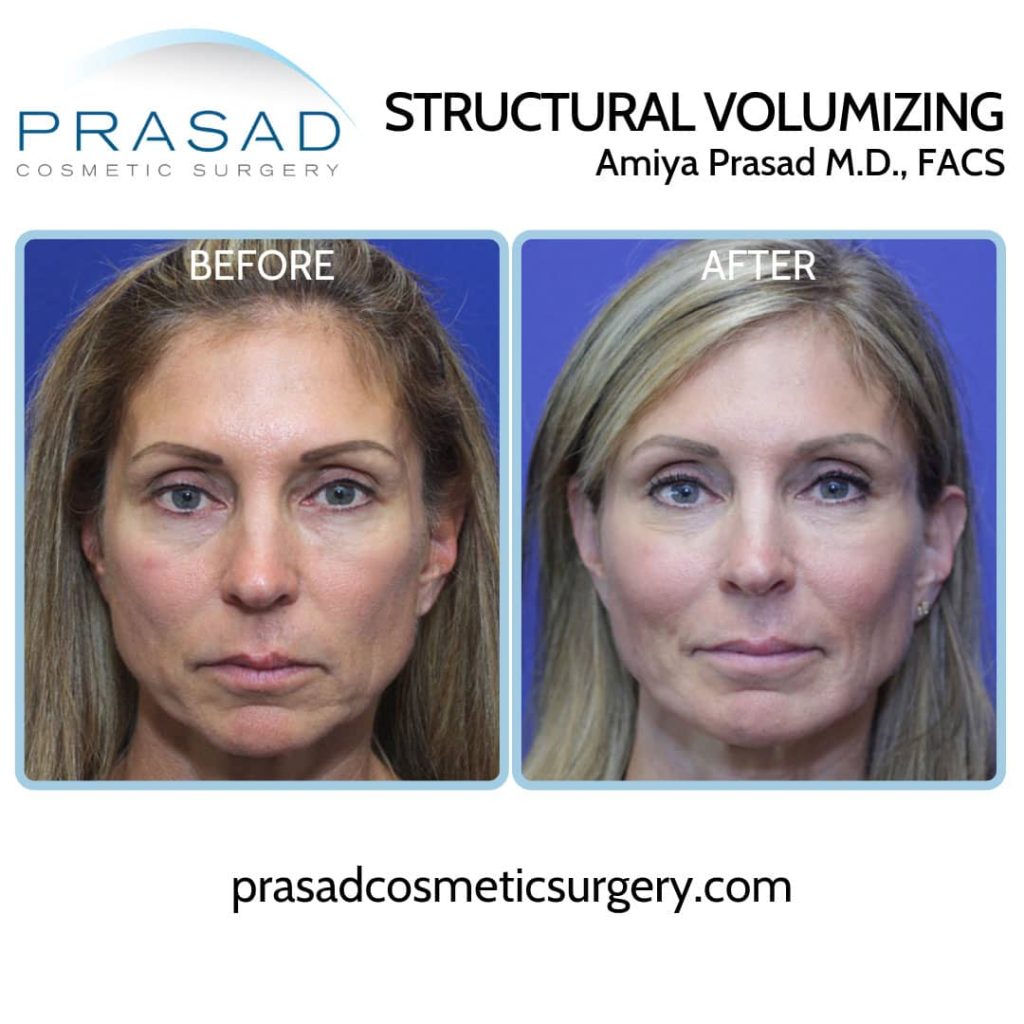
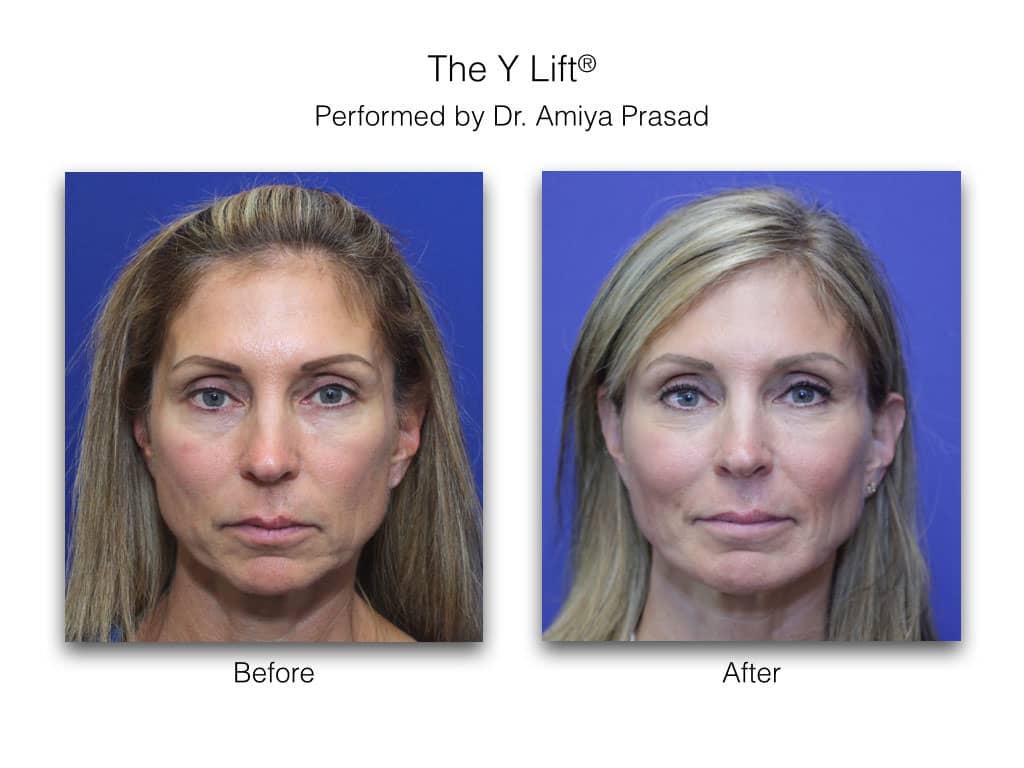
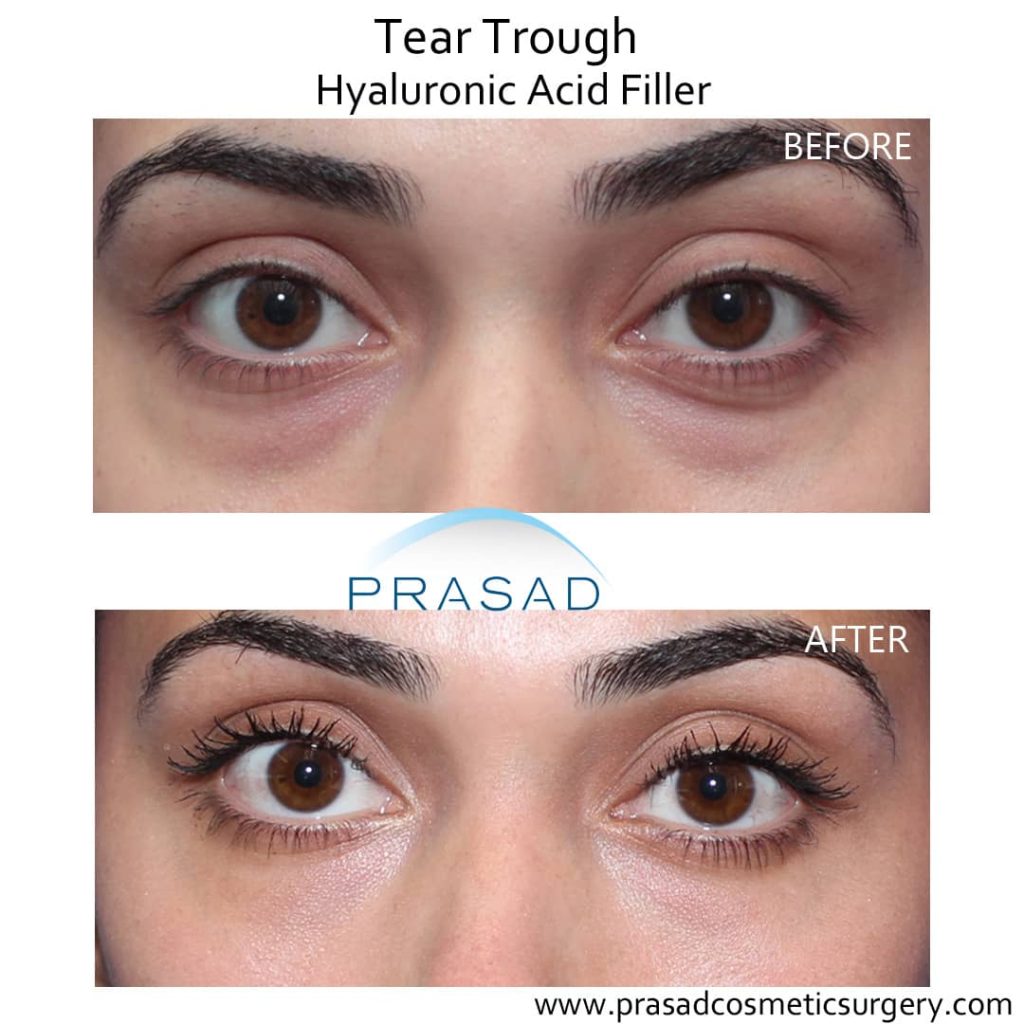
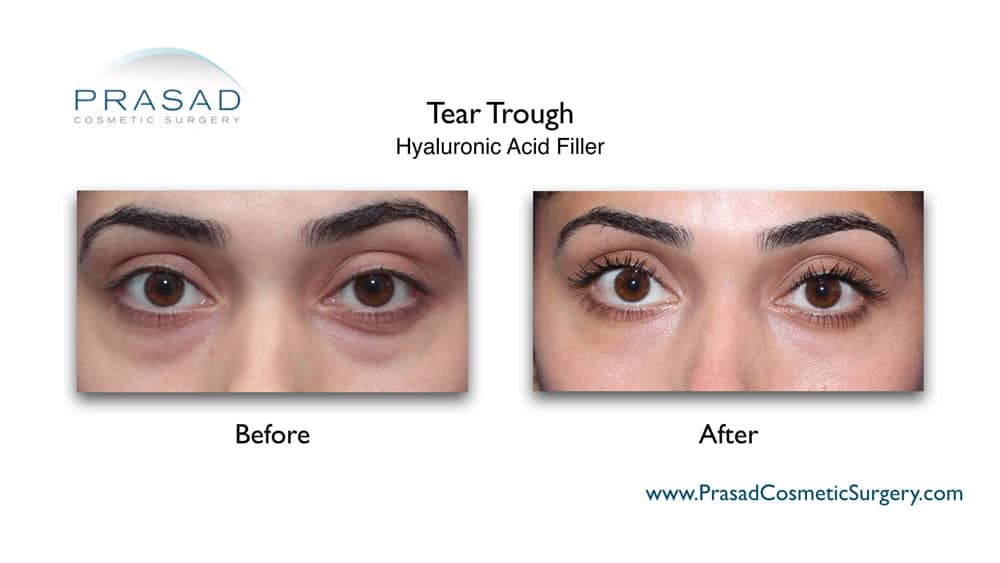
When it comes to cosmetic fillers, I prefer hyaluronic acid fillers such as those found in the Restylane and Juvederm lines. Since hyaluronic acid is naturally present in the body, these fillers are safely metabolized over time. In contrast, permanent and semi-permanent fillers can be difficult to manage if a complication such as infection or foreign body reaction occurs.
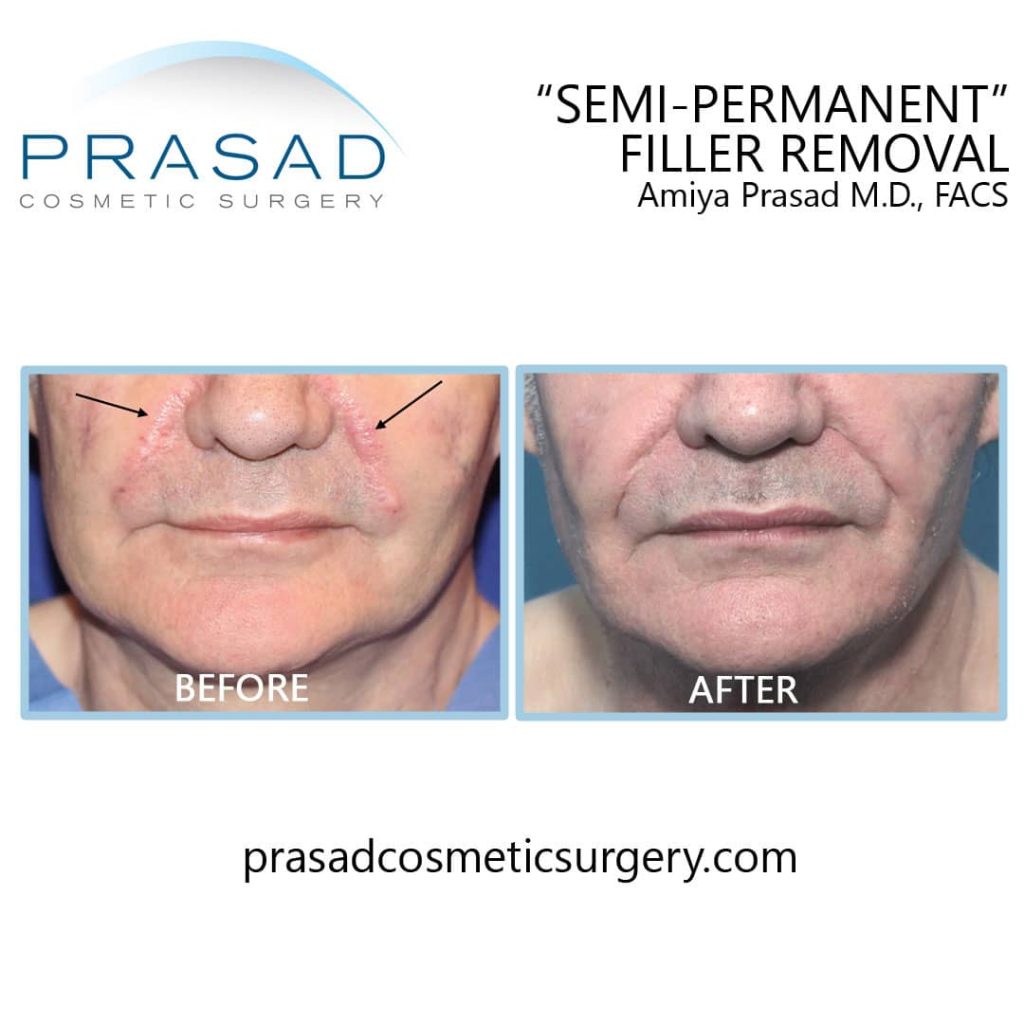
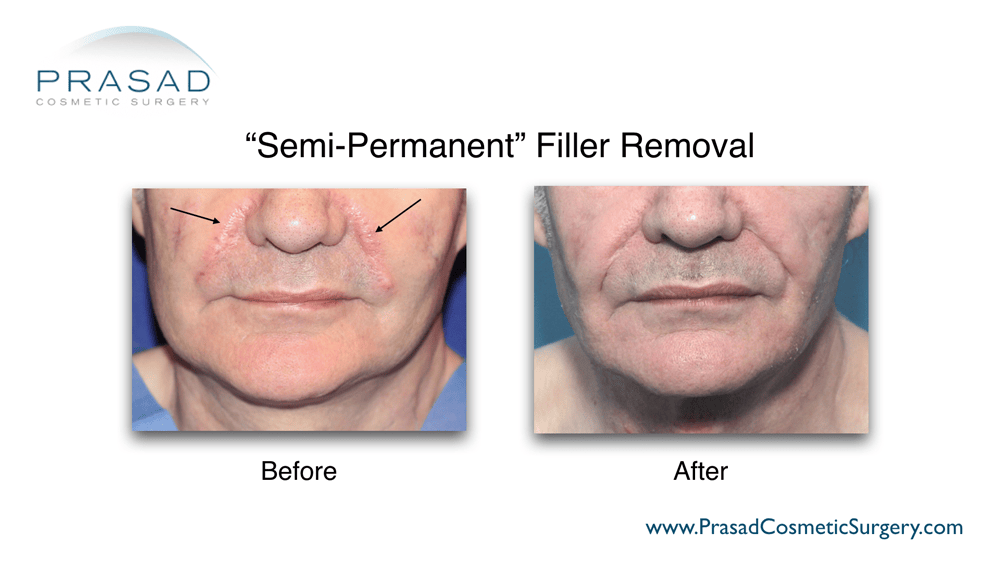
How Long Do Fillers Last in Cheeks, Jawline, and Chin?

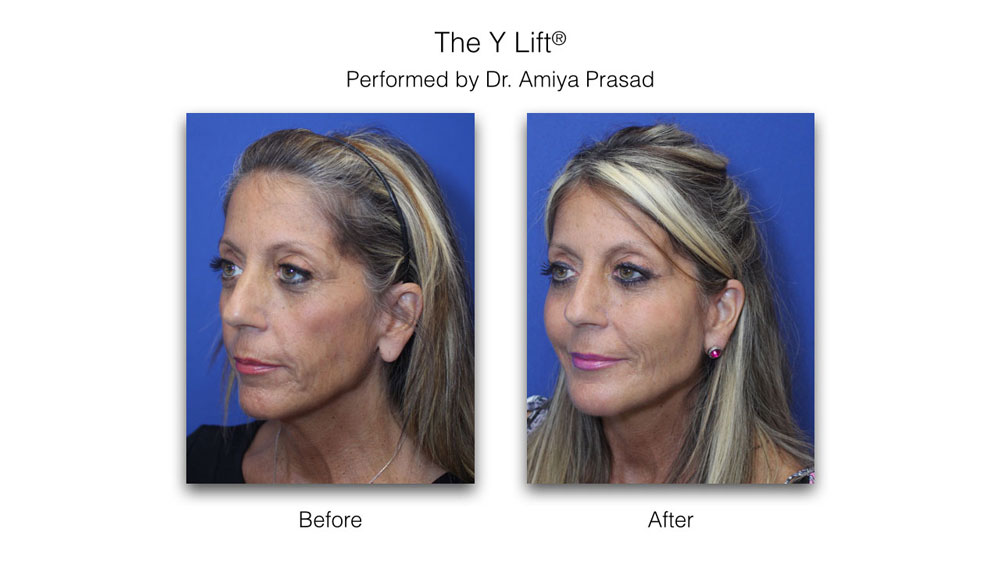
How Long Do Fillers Last in Lips and Under Eyes?
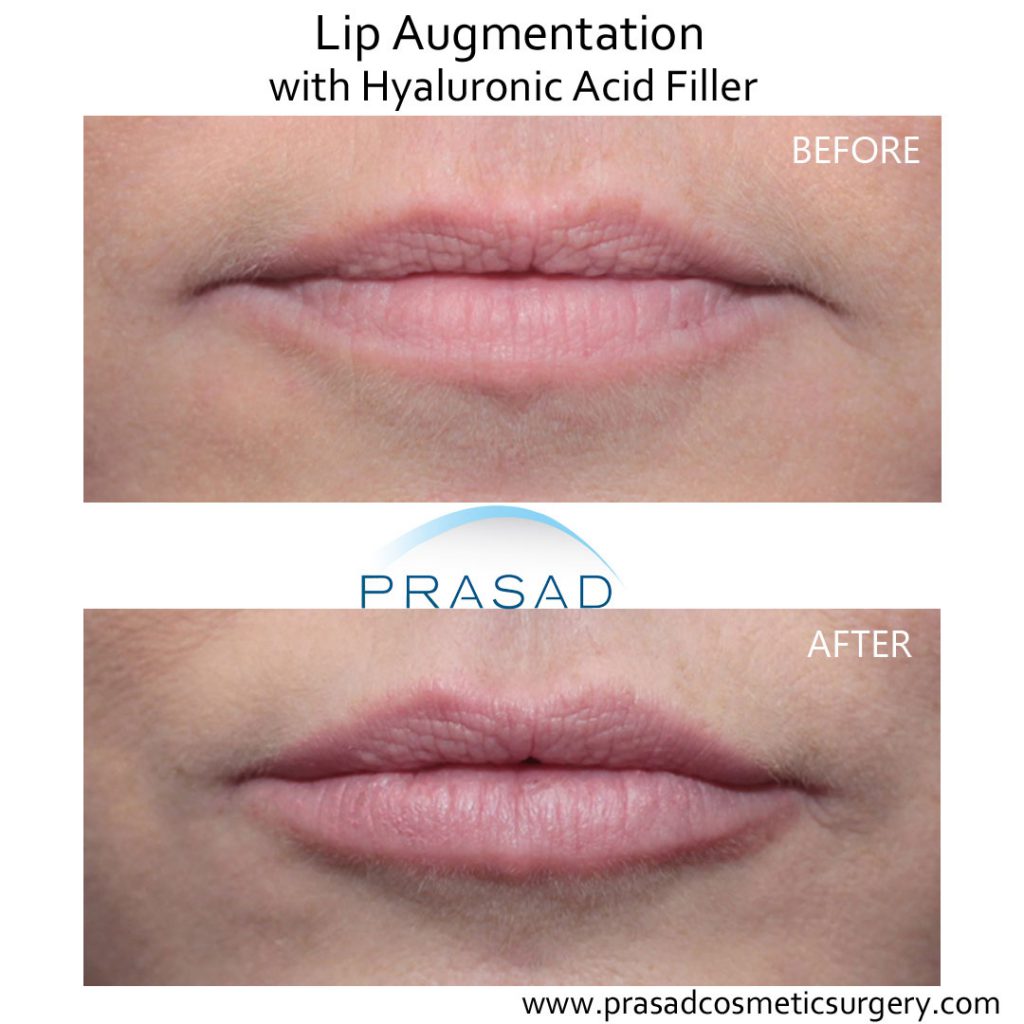
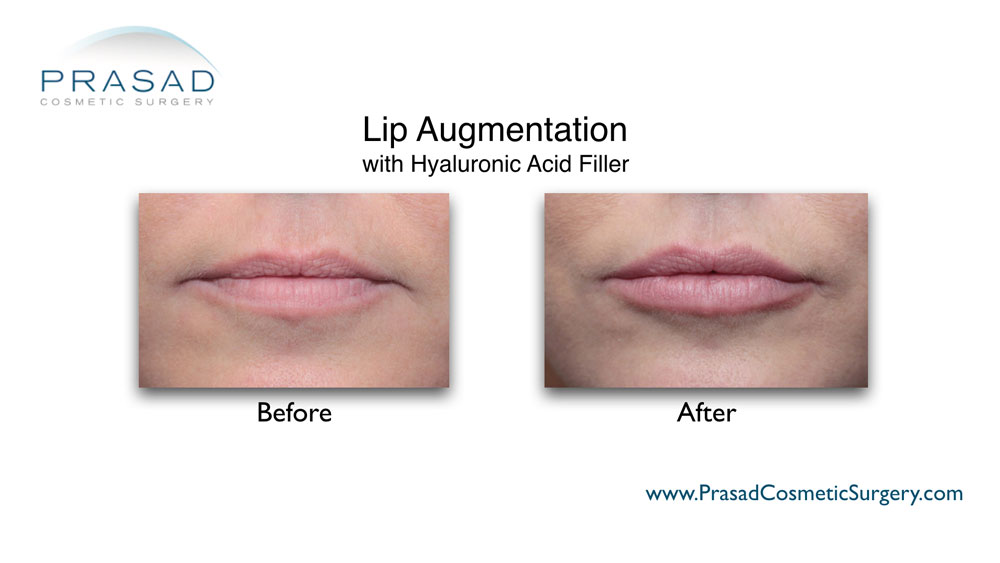
In my experience, this is best achieved using techniques where there is minimal inflammation and swelling. The hyaluronic acid which naturally exists in your skin plays a vital role in the support and hydration of your skin.
Hyaluronidase
The enzyme hyaluronidase breaks down hyaluronic acid in the skin as new hyaluronic acid is produced as part of your body’s natural metabolic processes. This means that hyaluronic acid placed during a procedure can also be affected by the hyaluronidase enzyme which exists naturally in your skin. Since hyaluronidase is not present in the space between the bone and the overlying muscles, hyaluronic acid filler placed in this space does not degrade as quickly as it does in the skin.
How to Avoid Pillow Face
As I previously stated, one major issue with conventionally placed cheek filler is the frequently observed unnatural results, such as people walking around with soft and pillowy-looking faces. This doughy appearance is caused by the filler being placed in the fat or soft tissue level, which is not strong enough to hold the filler in the intended shape. The filler either weighs down the face, or migrates, making the face appear bloated. I can achieve facial definition and more natural-looking results for my patients by using the technique I call Structural Volumizing for deeper filler placement.
This method of placing filler at the foundational bone level allows the hyaluronic acid to be stabilized by the bone, and the overlying muscle layer. My patients look more defined and natural, without the risk of filler migration or their faces looking soft or bloated. When Structural Volumizing is performed for the cheekbones, chin, jawline, and jaw angle, it’s referred to as the Y Lift.
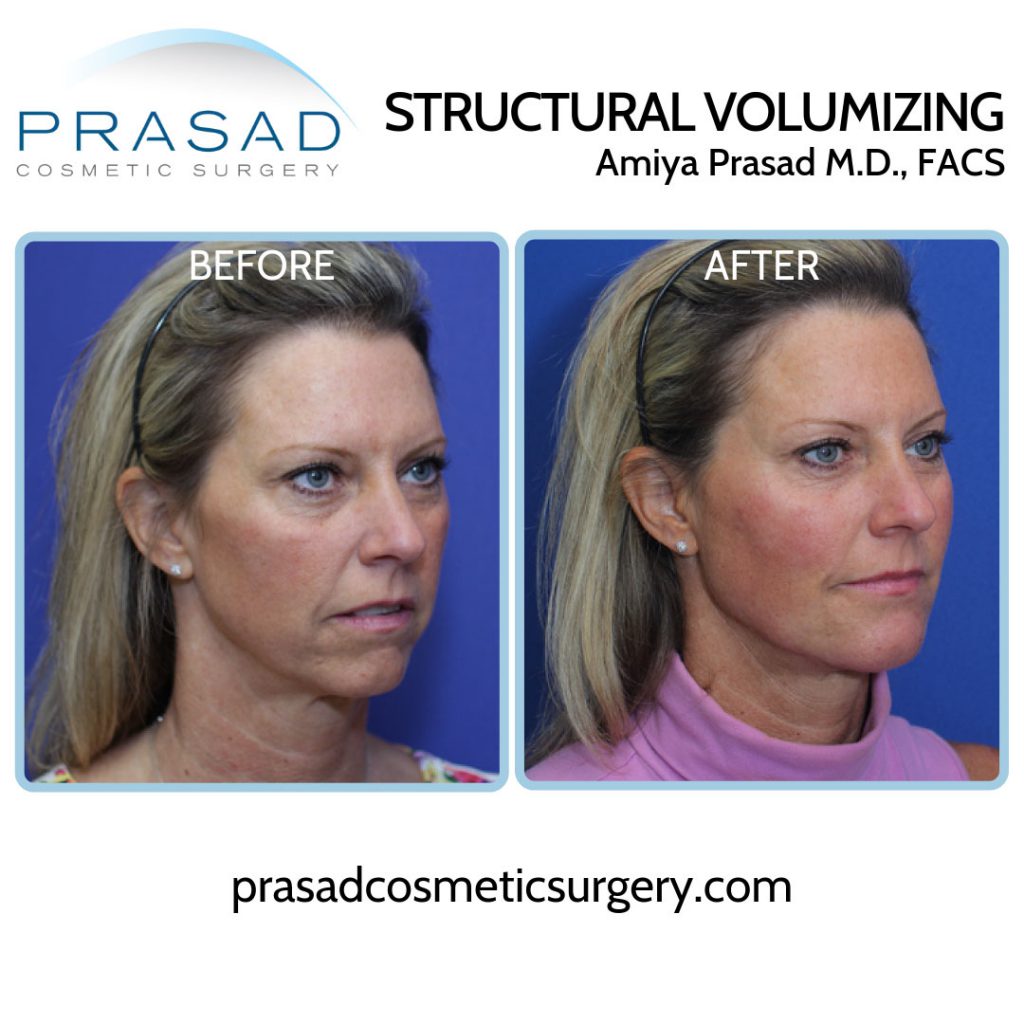

Non-Surgical Face Lift
The Y Lift is also known as a non-surgical facelift. My experience with facelift surgery, and surgical implants has proven to be invaluable in my approach to Structural Volumizing. As a surgeon, I can feel the levels where I’m placing the filler and know exactly where I am. Many well-meaning doctors mistakenly believe that by contacting the bone with the needle during filler placement, they are placing fillers at the bone level. In reality, the fillers are being placed at the soft tissue level or just beneath the skin.
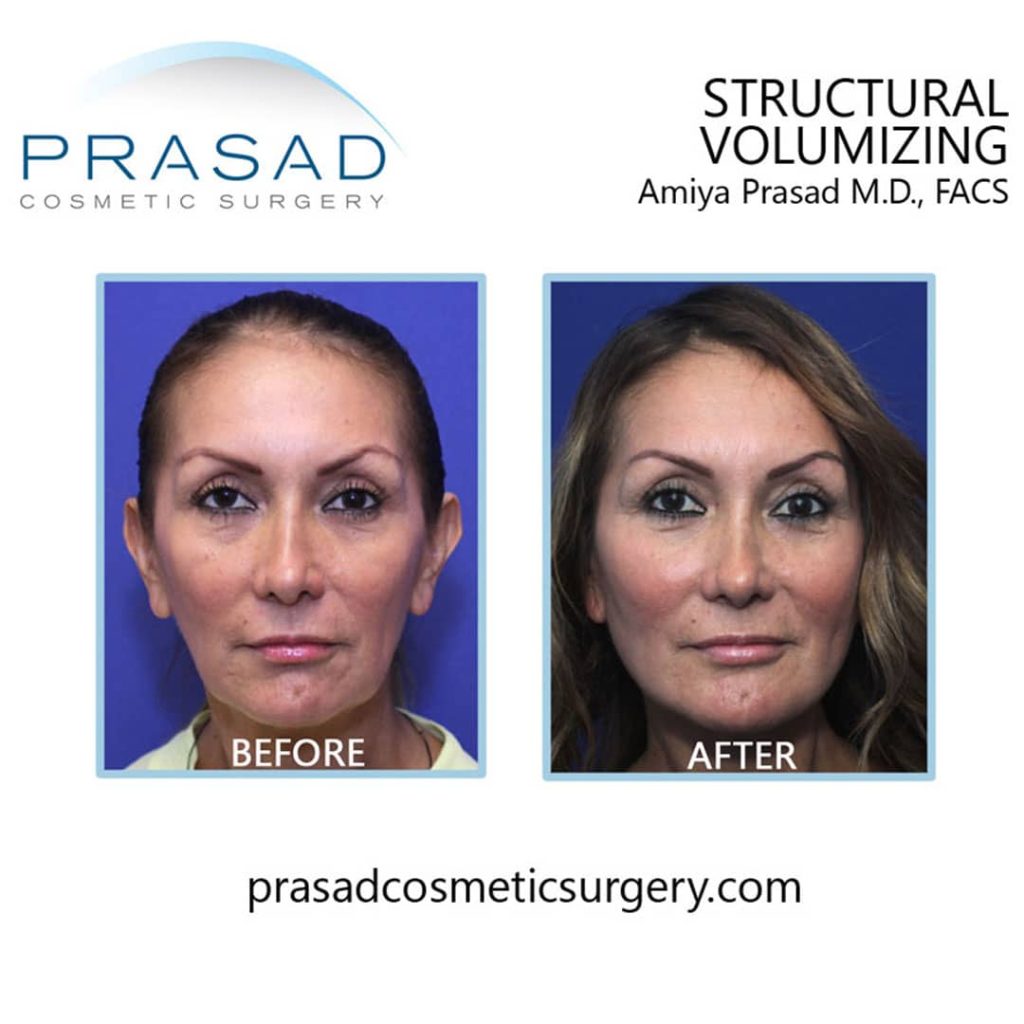
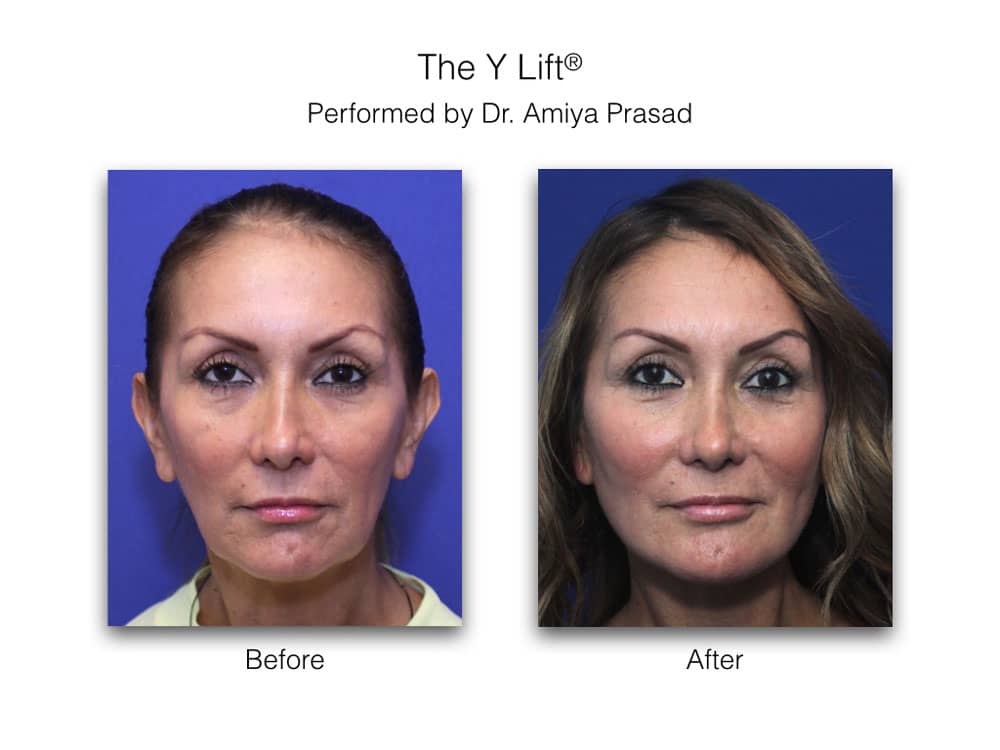
Structural Volumizing not only extends the life of fillers and improves definition, but it can also have a lifting effect. Face volume decreases with age due to bone, muscle, and fat loss. This reduction in facial structure provides less support for the skin. As a result, there appears to be a perception of sagging or stretching skin. A skin-lifting effect often occurs when volume is added at the bone level to rebuild the facial structure. For people whose skin, soft tissue, and underlying muscles require lifting, tightening, and repositioning, Structural Volumizing does not replace a facelift. However, for many of my patients in their 40s, 50s, and 60s who have significant facial volume loss in addition to skin and soft tissue sagging, Structural Volumizing or Y lift can give the appearance of a facelift.
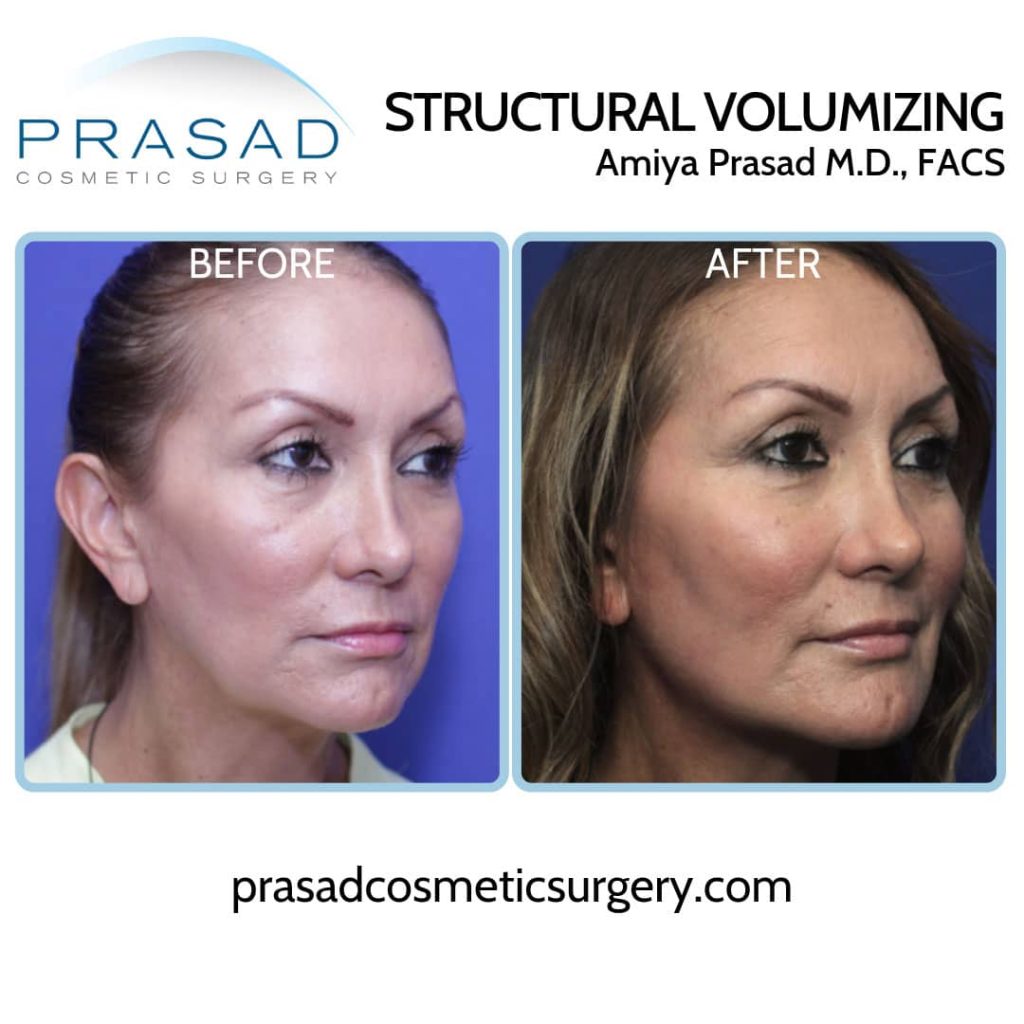

In comparison to traditional filler placement, one of the characteristics of Structural Volumizing is the use of very few needles, as the filler is precisely placed using blunt-tipped cannulas rather than needles. With careful filler placement using blunt-tipped cannulas, there is usually little to no bruising, swelling, or discomfort.
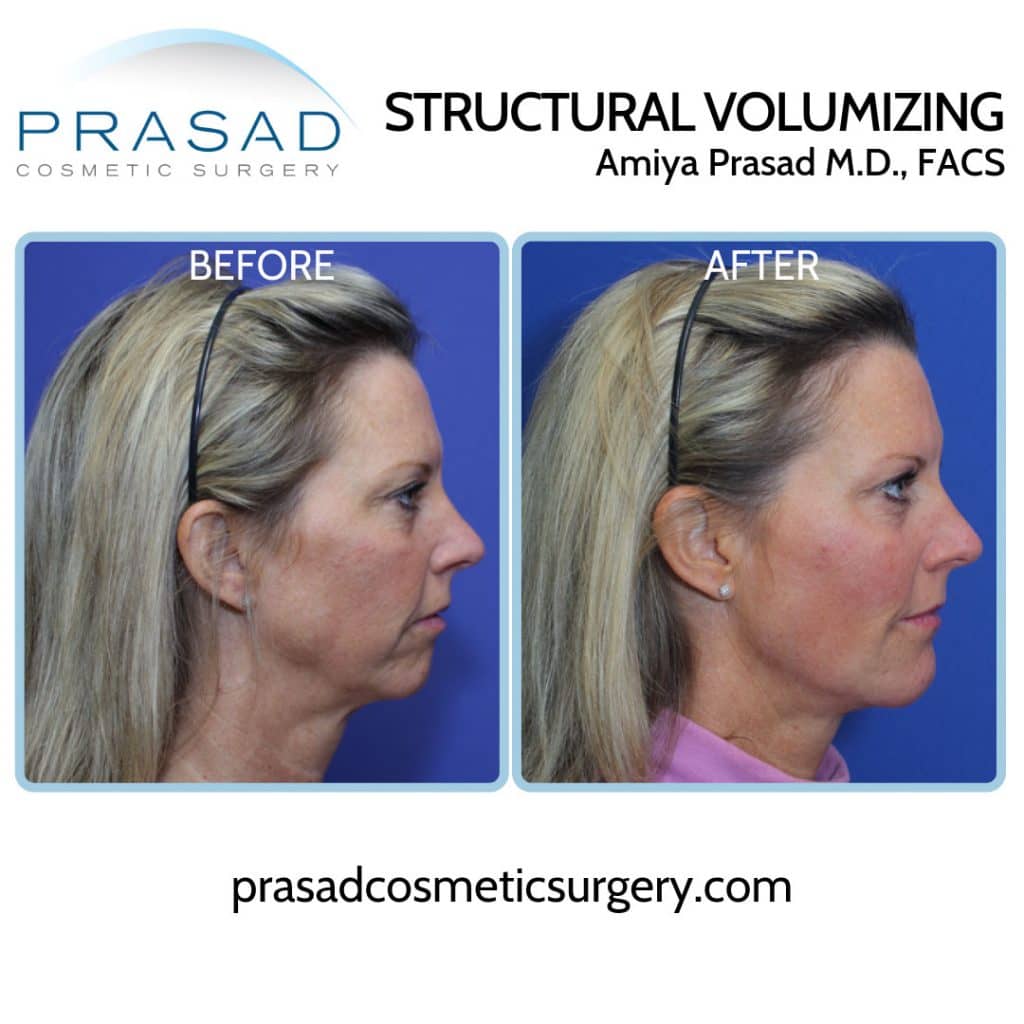
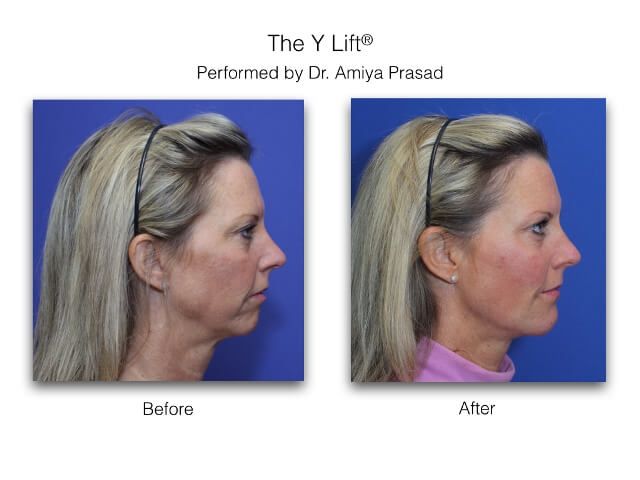

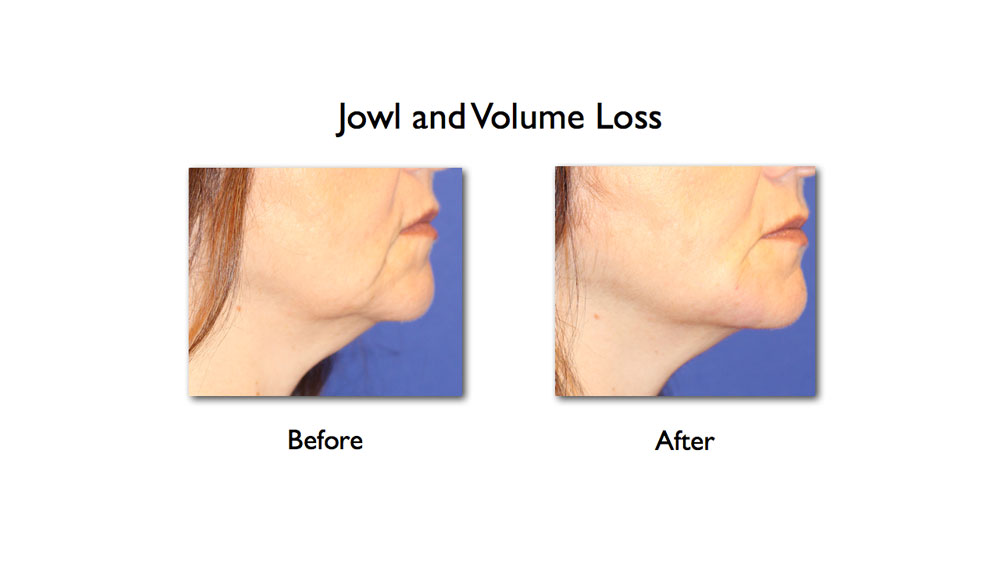
Your profile can be improved without the use of a chin implant by improving your chin projection. Sunken cheeks can be made more full and youthful-looking, with better definition and structure that more traditional filler placement techniques cannot achieve. It is critical to recognize that youthful faces are not only full, but also defined and balanced. While the results may look like a facelift, the procedure to treat the jawline, chin, and cheeks can be completed in about 20 minutes. Patients can look great right after treatment and can even go back to work, which is why some patients come in during their lunch break.
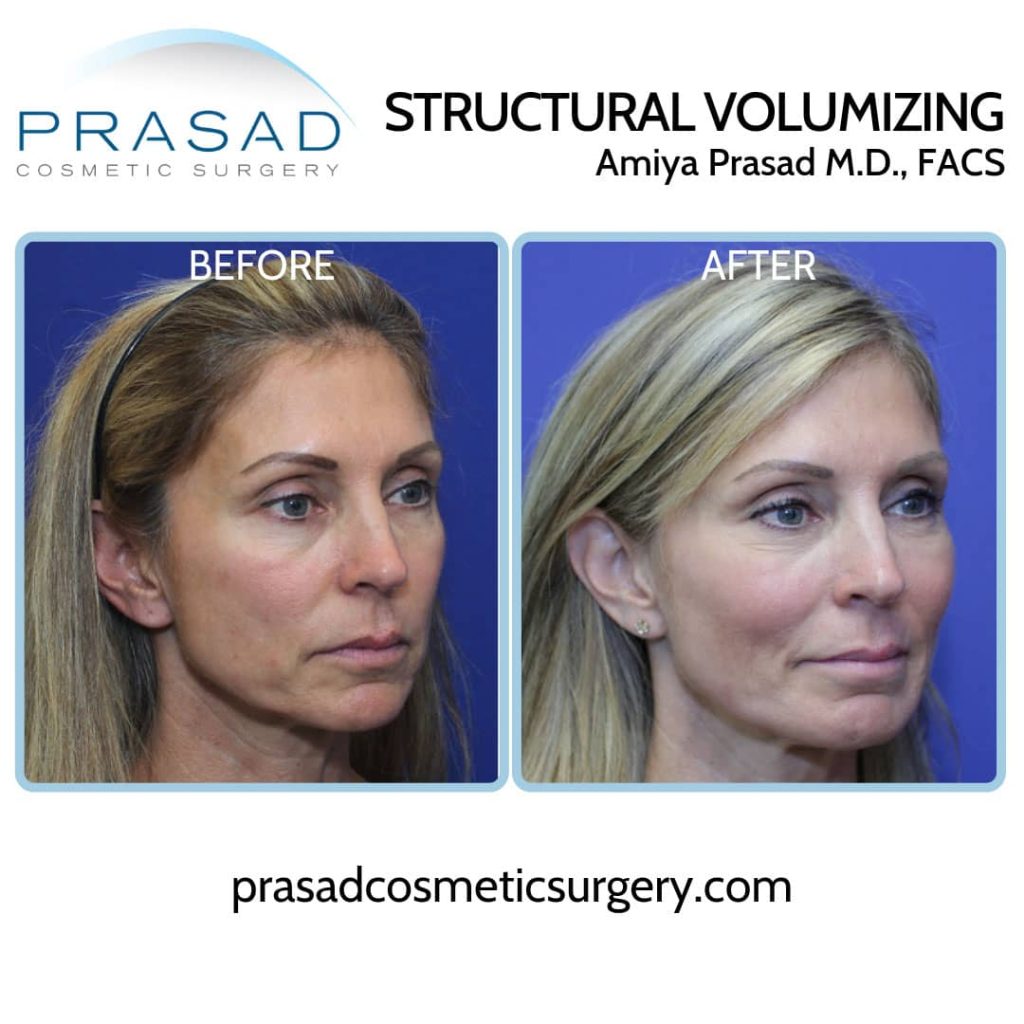
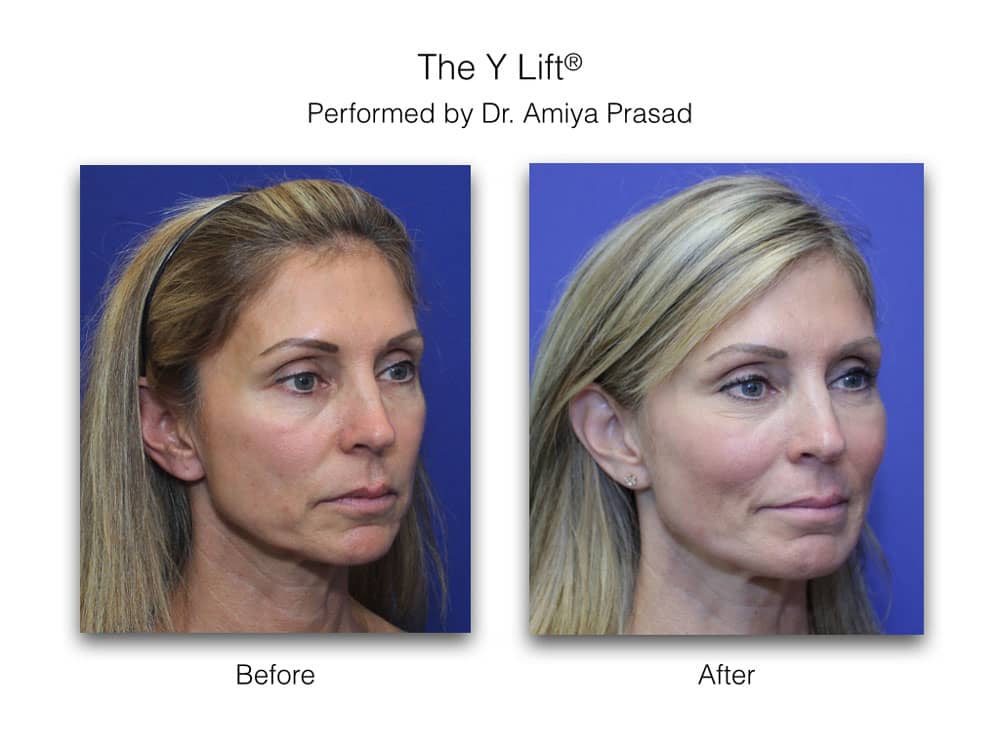
I see my patients two weeks after their filler treatment to see how they look after everything has settled. Doctors frequently try to overcome the limitations of traditional hyaluronic acid fillers by using semi-permanent or permanent fillers that are thicker. As previously stated, if a complication such as infection occurs, these fillers must be surgically removed. My patients benefit from Structural Volumizing because of the safety and reversibility of hyaluronic acid fillers. If it becomes necessary to dissolve hyaluronic acid, the enzyme hyaluronidase, which is sold under brand names such as Vitrase or Hylenex, can be used to safely dissolve the hyaluronic acid without the need for surgery.
I help my patients look their best at any age by combining longer-lasting and thicker hyaluronic acid fillers with advanced techniques like Structural Volumizing. My approach to maximizing safety while maximizing longevity and reversibility has allowed my patients to maintain a more youthful appearance for much longer than was previously possible with traditional approaches of applying hyaluronic acid fillers.
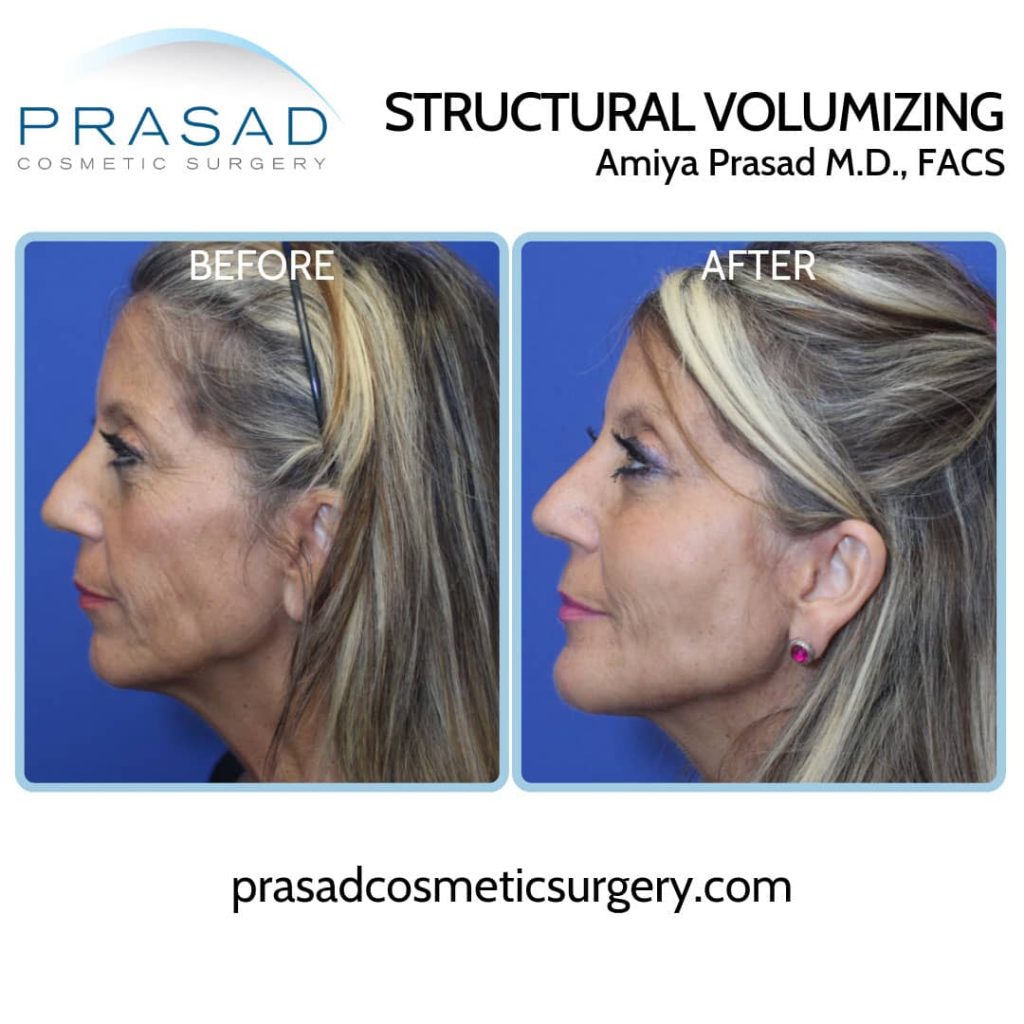
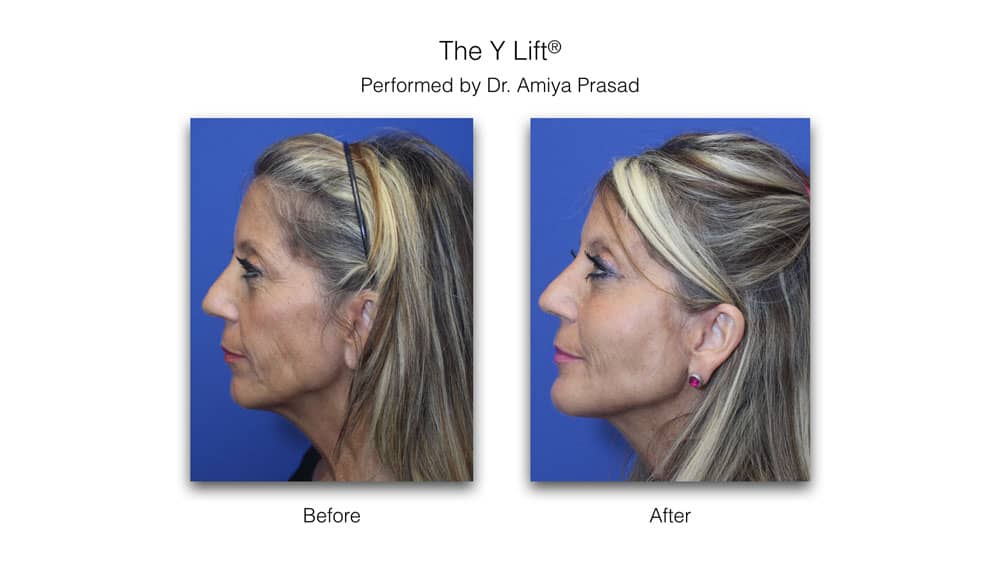
Dermal and Lip Fillers in NYC and Long Island, NY
Dr Amiya Prasad is a Board-certified cosmetic surgeon, and Fellowship-trained oculofacial plastic and reconstructive surgeon. He’s been in practice in New York City and Long Island for over 25 years. To schedule a consultation, fill up the form below or contact any of our offices at (212) 265-8877 in Manhattan, New York City; or (516) 742-4636 in Garden City, Long Island, New York; or Vienna, Virginia at (703) 356-1336.
